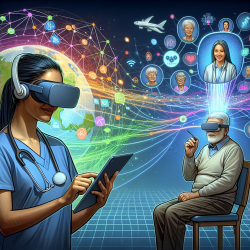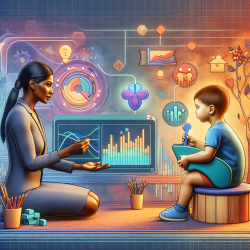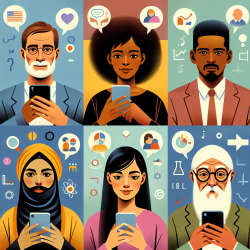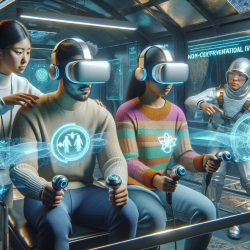Introduction
The field of speech-language pathology is constantly evolving, with new research providing insights into effective practices for diverse populations. One such study, "The Genesis of Ideas in the Blind Deaf Mute," offers a fascinating look into cognitive development in individuals who are blind, deaf, and mute. This research has significant implications for practitioners, particularly those involved in online therapy services like TinyEYE. By understanding the genesis of ideas in these individuals, practitioners can enhance their therapeutic approaches and improve outcomes for children with similar challenges.
Understanding Cognitive Development in Blind Deaf Mute Individuals
The study, conducted by Mrs. Burnet in 1883, explores how individuals who are blind, deaf, and mute develop ideas and concepts. Despite the sensory limitations, these individuals demonstrate remarkable cognitive abilities. The research suggests that cognitive development is not solely dependent on sensory input but also on internal cognitive processes and environmental interactions.
Key findings from the study include:
- The importance of tactile and kinesthetic experiences in cognitive development.
- The role of social interactions in facilitating idea formation.
- The ability of individuals to form complex ideas despite sensory limitations.
Implications for Online Therapy
For practitioners providing online therapy services, these findings underscore the importance of a multisensory approach. Here are some practical strategies to consider:
- Incorporate Tactile Learning: Use objects that children can touch and manipulate during virtual sessions to enhance learning and engagement.
- Facilitate Social Interactions: Encourage group sessions where children can interact with peers, fostering social skills and idea exchange.
- Focus on Individual Strengths: Tailor therapy sessions to leverage the unique strengths and abilities of each child, promoting confidence and independence.
Encouraging Further Research
While the study provides valuable insights, it also highlights the need for further research in this area. Practitioners are encouraged to explore contemporary studies and contribute to the growing body of knowledge on cognitive development in individuals with sensory impairments. By staying informed and engaged with current research, practitioners can continue to refine their approaches and improve outcomes for their clients.
Conclusion
The research on the genesis of ideas in blind, deaf, and mute individuals offers a unique perspective on cognitive development. By integrating these insights into online therapy practices, practitioners can enhance their effectiveness and create meaningful outcomes for children. To read the original research paper, please follow this link: The Genesis of Ideas in the Blind Deaf Mute.










